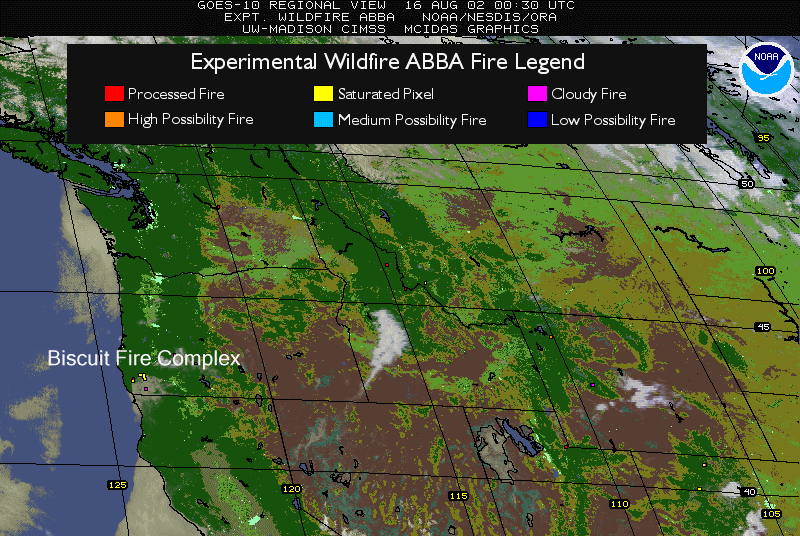
[ Archive ]

 |
CIMSS-NOAA Weekly Report
[ Archive ] |
 |
IN THE PRESS:
ITEMS FOR THE ADMINISTRATOR:
ITEMS FOR THE ASSISTANT ADMINISTRATOR:
ITEMS FOR THE OFFICE DIRECTOR, ORA:
NOAA Mid-level Staff Retreat in Washington,
D.C.:
T. Schmit attended the first ever National Oceanic and Atmospheric
Administration (NOAA) mid-level staff retreat in downtown Washington,
DC
on October 20-21, 2003. One theme was to create the NOAA corporate
identity. Another theme was that there are many changes that are or
will
affect NOAA. These include the ocean commission report, matrix
management,
and the Planning, Programming and Budgeting System (PPBS) approach.
There
were many presentations from upper-level management. This included a
visionary talk by Vice Admiral Lautenbacher, "NOAA 101", the
PPBS, Program Planning and Integration (PPI), education and outreach,
communicating with the Congress, matrix management, the Survey,
Feedback,
Action (SFA), etc. All presentations (and the agenda) have been posted
on
the Program Coordination Office (PCO) web site
(http://www.pco.noaa.gov/midLevel.htm).
(T. Schmit, E/RA2,
608-263-0291)
NOAA Tech
2004 Conference: On October 22, 2003, T. Schmit gave a presentation
at the National Oceanic and
Atmospheric Administration (NOAA) Tech 2004 conference. The
presentation was entitled "Using Virtual Institute for Satellite
Integration Training (VISIT)viewTM for Collaboration and Distance
Learning" and is available upon request. The
Java-based VISITview software can be used in a variety of training,
outreach, education and collaboration activities. Some of the software
features were demonstrated during the talk. Streaming video of
all the
talks will be posted at
http://www.noaatech2004.noaa.gov/.
(T. Schmit, E/RA2,
608-263-0291)
Rapid Scan Winds for Atlantic Thorpex:
CIMSS is producing experimental winds datasets derived from GOES-12
Super Rapid Scan Operations (SRSO) for the Atlantic Thorpex Regional
Campaign (A-TReC). The winds are being derived over targeted domains in
the North Atlantic provided by the A-TReC project office on selected
days between now and December 15. The targets are provided by global
numerical model output which determines localized regions of analysis
deficiencies from singular vector or adjoint methods. The A-TReC
campaign then attempts to enhance observations in these regions. The
GOES winds are being derived from consecutive 3-minute image loops, in
the IR and VIS bands. Datasets are being disseminated to the project
office at the UKMET forecast office for data assimilation and impact
evaluations. The real-time dataset plots can be found at: http://gale.ssec.wisc.edu/thorpex/thorpex.html.
(C. Velden, CIMSS,
608-262-9168, D. Stettner, CIMSS, 608-262-8850)
ITEMS FOR THE DIVISION CHIEF, ARAD:
COMET Guest Instructor: S. Bachmeier was a
guest instructor at the Cooperative Program for Operational
Meteorology, Education and Training (COMET) Mesoscale Analysis and
Prediction
(COMAP) course in Boulder, Colorado on October 24, giving a
presentation titled
"Water Vapor Channel Satellite Imagery". COMAP is a 6-week residence
course for National Weather Service (NWS) Science and Operations
Officer (SOO)
staff. (S. Bachmeier,
CIMSS, 608-263-3958)
Requests for GOES Montages of hurricane Isabel Continue: Following interest in the initial montage, or composite sequence, of once daily Geostationary Operational Environmental Satellite (GOES) infrared imagery of hurricane Isabel in mid September 2003, additional requests for variations in the displays have been filled. J. Shadid (NOAA/NESDIS/ORA) and R. Parrish (NOAA/OMAO/AOC) sought, and were provided, displays at other temporal resolutions and with modification of other details. All these montages are accessible in the first two sections of a web page for customized "special products" available from the Advanced Satellite Products Team (ASPT), at http://cimss.ssec.wisc.edu/aspt/products/prod.html. (G.S. Wade, E/RA2, 608-263-4743)
WF_ABBA Fire Product Observations of the
Biscuit Fire Complex Requested: William Stockwell, Research
Professor in the Division of Atmospheric Sciences at the Desert
Research Institute in Reno, Nevada requested WF_ABBA observations of
the Biscuit Fire Complex from August 5-18, 2002. Composite
WF_ABBA observations from August 5 to August 18 of the Biscuit fire
complex were provided to Dr. Stockwell as well as alpha blended loops
of WF_ABBA fire pixel imagery that provide evidence of smoke
plumes. The WF_ABBA data will be used to estimate emissions for
an ozone formation model over central California during that
time. The animated gif shows a smoke plume forming over the
Biscuit Fire Complex around 1500 UTC and is transported along the
northern coast of California. Older smoke is being transported
into the northern region of the central valley. (J. Feltz, CIMSS,
608-263-3434, E. Prins, E/RA2, 530-271-2256, C. Schmidt, CIMSS,
608-262-7973).
 (Click to enlarge and animate)
(Click to enlarge and animate)
Figure Caption: GOES-10 WF_ABBA detected fire pixel alpha blended
imagery loop of Biscuit fire complex on 16 August 2002. The
Biscuit Fire Complex is located below the label in the opening
frame. The loop will pause briefly to indicate regions of smoke
coverage which continue to develop in the following frames.
CIMSS Scientist on Extended Visit to EUMETSAT:
Kathy Strabala left the Cooperative Institute for Meteorological
Satellite Studies (CIMSS) this week to begin a six week collaboration
as a visiting scientist at EUMETSAT. She will be working with Dr.
Marianne Koenig to transfer knowledge of Geostationary Operational
Environmental Satellite (GOES) stability derived products to their new
instrument, Meteosat Second Generation (MSG). (K. Strabala, CIMSS,
608-263-8752)
STAR Administrative Retreat: J. Key
attended the ORA/STAR administrative retreat in Clinton, Maryland
October 23-24. The focus of the retreat was on the STAR science
and technology roadmap. (J.
Key, E/RA2,
608-263-2605)
Manuscript and Proposal Reviews: J. Key reviewed a manuscript for the IEEE Transactions on Geoscience and Remote Sensing on a new approach to identifying cloud tracers in satellite data. He also reviewed a proposal for NASA's New Investigator Program on the snow-albedo feedback. (J. Key, E/RA2, 608-263-2605)
VISITORS: